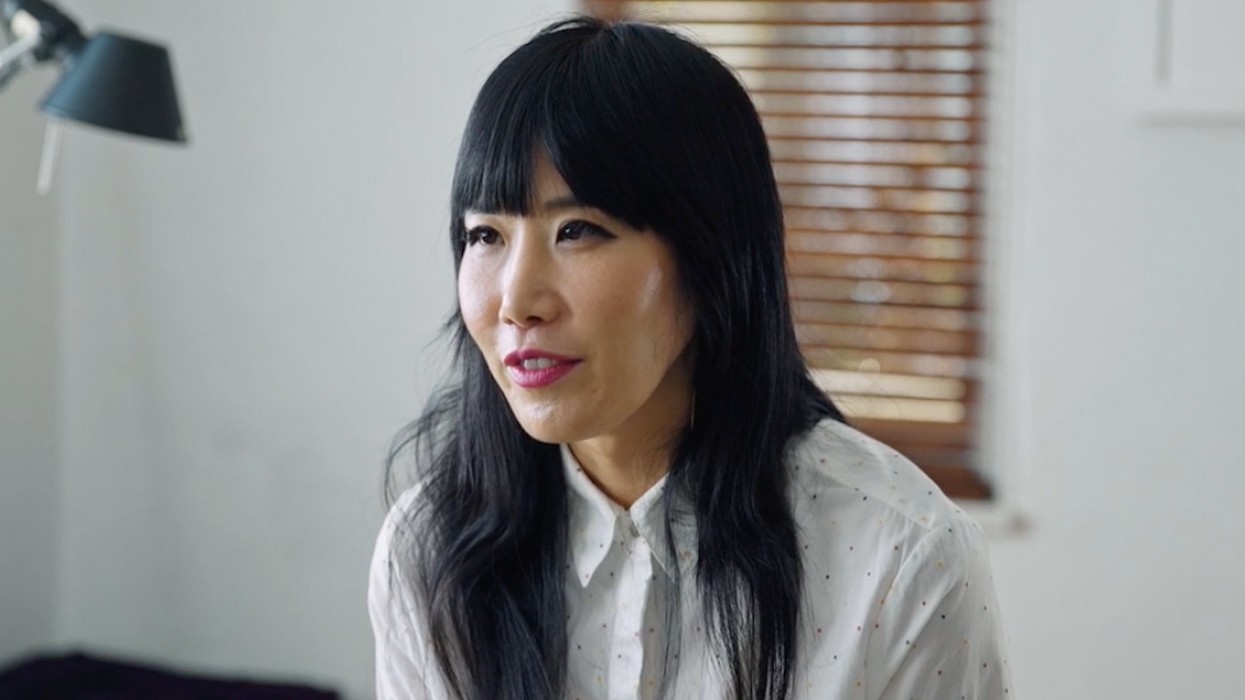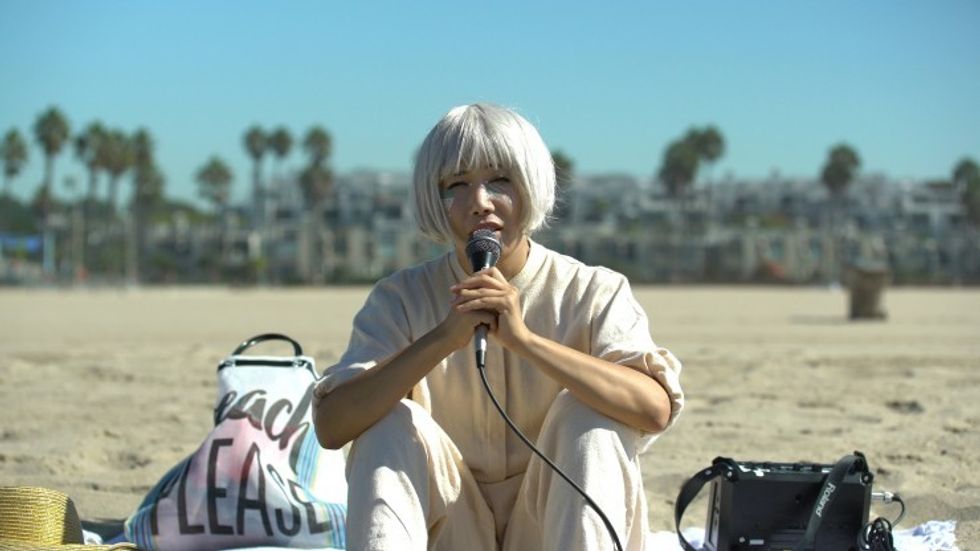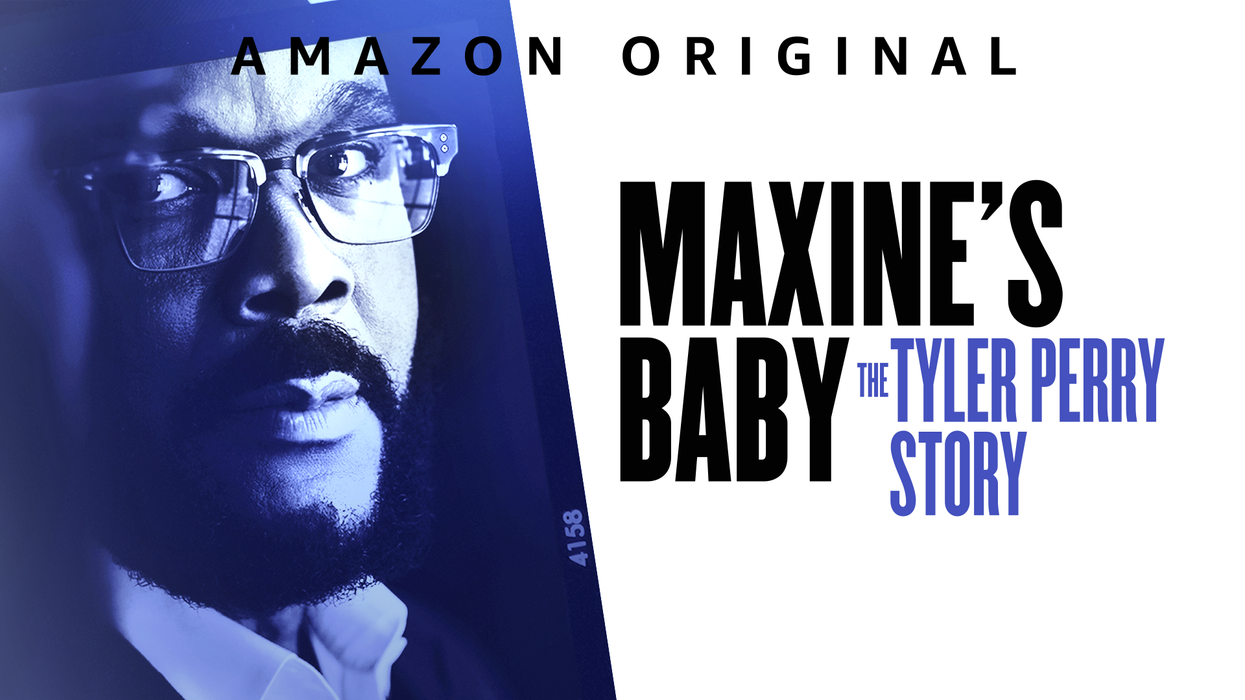'If You Don't Cut, You're Just Being Lazy': 'White Rabbit' Star Vivian Bang on How to Cut Down Your Feature
For Vivian Bang, the development of 'White Rabbit' was a rapid but organic process.

White Rabbit, currently in theaters, is many things: a record of performances, a love story, a character portrait, a social statement, and kind of an ambulatory urban mural.
Tying it all together is the presence of Vivian Bang, who plays Sophie, a young performance artist making her way in Los Angeles, parrying with the world at large, with her various employers (as a Task Rabbit), and with the people she becomes closely acquainted with. It's a quiet film, punctuated by memorable supporting performances from Nana Ghana and Nico Evers-Swindell. Its story centers on Sophie's learning process, as she discovers how to make contact with others in a way that leaves her whole.
No Film School spoke with Bang, whose acting credits include Get Shorty,Sullivan and Son, and Status Updates, about writing the film with director Daryl Wein.
No Film School: Given that the film grew out of your work in performance art, how has that helped what you do as an actor?
Vivian Bang: I began my career as a performance artist in New York. I had a performance art group called The Big Art Group, and so that was always kind of where I came from. I came to Hollywood to work on more commercial films, and so I wasn't really pursuing performance art, but after the election, I think a lot of artists were called to serve. What can we do with our gifts, to throw a light into stories that are marginalized? I felt that we as artists all have to do something.
This wasn't a piece I had planned to develop. Performance art, as you know, is a very different type of platform, and I actually did perform some of the pieces in grocery stores, like in Koreatown. I would dress up as that character to decolonize history and talk about the L.A. riots from the very niche Korean-American perspective.
A lot of people just ignored me, and then I eventually put up the piece in a multidisciplinary show at REDCAT, the piece that's called Can You Hear Me? It was really neat because you get a niche audience. Who goes to see performance art? Some people go to museums, or they will go to an avant-garde theater space, but you can't reach as many people as you can with a platform like this.
Daryl, the director of the film, was actually in the audience, and we had not known each other. I guess he did hear me, because he reached out three months later to tell me how he couldn't stop thinking about the piece, asking if he could possibly turn part of that into a film and also investigate the life of this artist.
"Can an artist take up space in this capitalist world?"
NFS: What was the writing process like for the screenplay?
Bang: The performance art piece, where I'm dressed in the wigs, took six months of research, to find out the history of the L.A. riots and also to come up with the characters, but all of that was part of the performance I had already written. I had put that piece to rest, and I'd moved on to work on other projects, but then he reached out and we just planned to meet for an afternoon to discuss the possibility of turning something like this into a film, an existential comedy about whether there is a space for an artist who doesn't have a huge audience. Can an artist take up space in this capitalist world?
We were talking about that, and he's like, "So what is the life of this performance artist like?" We went back and forth, and we talked for four hours and came up with a blueprint right away at our first meeting. I mean, this is our first meeting ever. I think he really wanted to convince me to work on this project, because he asked me what I was doing that evening. He's very persistent, Daryl, and we actually met that evening.
In one of the blueprints that we had started, I always said that I wanted to start with the performance, and it should be at the grocery store, and so he said, "Well, do you remember some of your piece? You know, could we just do something tonight?" And I was like, "No. I need time and I need to rehearse, you know, it's been six months." And he says, "Let's just go and do it," and so I was like, "Is this guy crazy?" And he actually came up with a film crew, a favor from a friend, and we filmed that scene, which was the very first shot of the movie.
NFS: During the sequences in which you're doing the performance pieces, were the people in the background arranged in a more planned occupation of the space?
Bang: Some of the spaces we had planned, but then when you're working on such a small indie film and you have a crew of like seven or eight people, sometimes things change, and so we had to improvise a lot. I remember we lost one of our spaces that we had planned—they sort of changed their minds. It was a mixture of both. It was a mixture of planning, structure, and freedom.
NFS: I know a lot of parts of the movie are fairly close to you and your experience. How did the script change as you were developing the movie?
Bang: Of course there's a part of me in the movie but I'm not very much like Sophia. I don't have a performance art practice every day the way that she does, I don't have this need to reach the audience in the way that she did. Searching for connection is universal, but I definitely had a couple of characters in mind that I drew from to create this performance artist, Sophia. I have three very close friends and she's sort of part of me but also part of these three friends.
We were filming and writing at the same time—we had a very strong blueprint but then we also left room for improvisation. For example, when she's heartbroken in one scene and she does this sort of dance by the bridge, that happened organically because the woman who was supposed to be in the scene didn't show up for an hour. Because we were on a tight schedule, we were thinking, "Okay, what else can we shoot?" And I said, "I think she just needs to express herself with a weirdo dance, you know?” That came organically but then, after that, we shot the scene that we had written.
"It was a mixture of planning, structure, and freedom."
NFS: You've mentioned a blueprint. What form did that take exactly? Was it in outlined or was it half script, half description?
Bang: Well, at first it was just an outline, and then we kept going back and forth, changing the outline, and then he would take a scene and write a script, and then I would take a scene and write a script. Some days we wouldn't even have a script but rather bullet points of what needed to be said.
There was so much kismet in the air. Next door to a gallery where we were shooting was this random traditional fan dancing studio. We just begged the people there to be in the film, and they said, "Oh, but come see us on stage, this is a studio and we're just rehearsing." And we're like, "No, that's wonderful, what you’re doing right now." Right next to the art gallery was this wonderful twist of fate. The universe helped us!
NFS: This is a very short and sweet film. Was there a lot of whittling down that took place, or how did it take shape lengthwise? I mean, it's a 71-minute film, but it tells a tremendous story in that space.
Bang: Yeah, we had a lot of scenes that we eliminated. Sophia had many more dialogues with other friends, and then we took out some of those characters because they didn't add to the story.
We had a scene with her and her landlord where she's behind on rent, and that kind of thing, but it seemed unnecessary to us. We both felt like we just wanted to capture just what we needed, nothing less, nothing more. It actually also had to do with the Sundance deadline. We wanted to meet the deadline and were thinking, "We need to just finish this film." You know, when you're making an existential film about an artist's life, you can kind of go on forever.
NFS: So it was easier to just chop things away than build something? Because some people would say it would be easier to just leave the things in the movie, but you whittled it down.
Bang: Yeah, we really did, yeah. Sometimes cutting is harder than adding, I think, and editing, that's also one of the most important parts of the process.
NFS: Of course. It's so often underappreciated.
Bang: I think there's a quote that says, "If you don't cut, you're just being lazy."
NFS: Along that line, when you were working with the cinematographer, how you did work out blocking?
Bang: A lot of it was shot by Daryl. He had the camera, but we also had a small crew. When you're working with a small crew, sometimes it's easier because you develop this vocabulary together as you're writing, and you get so close, and you kind of have a creative shorthand. We didn't storyboard anything, obviously, but we had this incredible visual language, and we wanted to make the film like YouTube culture voyeurism, very intimate and personal, and so I think that the camera work really adds to that.
"If you don't cut, you're just being lazy."
NFS: In much of the movie, the significant parts were shot outside. Was that at all an issue? When you're shooting a film in nature, a lot of accommodations have to be made. Was there any negotiation on that side?
Bang: You know, luckily, we're shooting in California, where the weather's perfect all the time. In Los Angeles we wake up and we say, "Another perfect day." We're very lucky and fortunate. I guess that's why the studios are here. Rarely does it rain.
NFS: I was also curious about the presence of mukbang. How did you view it as fitting into the whole story?
Bang: Well, one of the themes of this movie is about connection, looking for an audience, and mukbang is such a crazy phenomenon on YouTube, where you just become a voyeur watching people eat enormous amounts of food. They have millions of viewers, though, you know, so in a way they have a responsibility to their audience to keep making the videos.
I just was really interested in exploring that kind of platform, and Sophia is also desperate to find her audience, and so she's trying it all and making a commentary on mukbang videos and poking fun at it too, making a commentary about our addiction to junk food. I'm personally very fascinated with the whole mukbang culture. Even just the whole YouTube culture, you could spend hours streaming these videos, and some of them are just about the personal lives of these people, and learning about, I don't know, how to not kill a bamboo...I think there’s a deep need in us for connection, and she's exploring that, even though her channel only has four followers.
NFS: When you mention consumption, that actually brings me to another question, which is to what extent you think the movie is sort of about that, about the way that we receive things?
Bang: One of the other themes of the film is our attempt at tackling options. There’s just this big absence of Asian American females in media and in leading roles. We're saying, if there's not systemic support to give space to artists, whether it be Hollywood or museums, there's always this absence of people of color and diversity in media.
It's like there's a systemic suppression of options. If the institutions are not going to help you and put you on a platform, do you just do it? And so that's why she's performing and taking these spaces at supermarkets and other DIY locations. She’s saying, "Okay, well, if you guys aren't going to give me the chance, I'm just going to do it myself.”
As for consumption and what is available, do we really have a choice in what we consume? It's like the mainstream media is always throwing down this product, and big institutions are feeding us what we see. I feel like there's a major shift now in our culture, sort of like the needle is turning all the way to the other side. Even just last year it wasn't as dramatic as it is now. There are already lots of changes, so it's exciting and also necessary. In terms of consumption, it’s about that: what is our choice, and what's the alternative?












